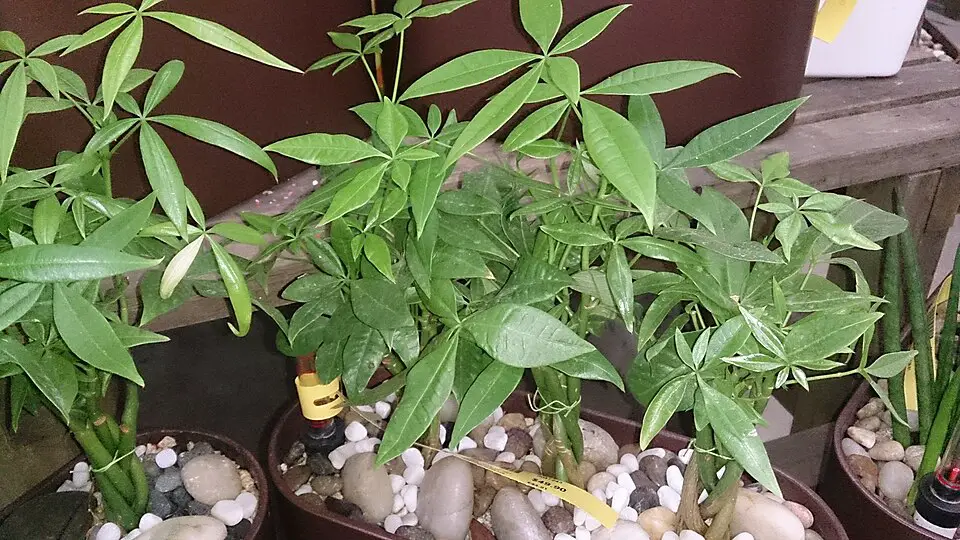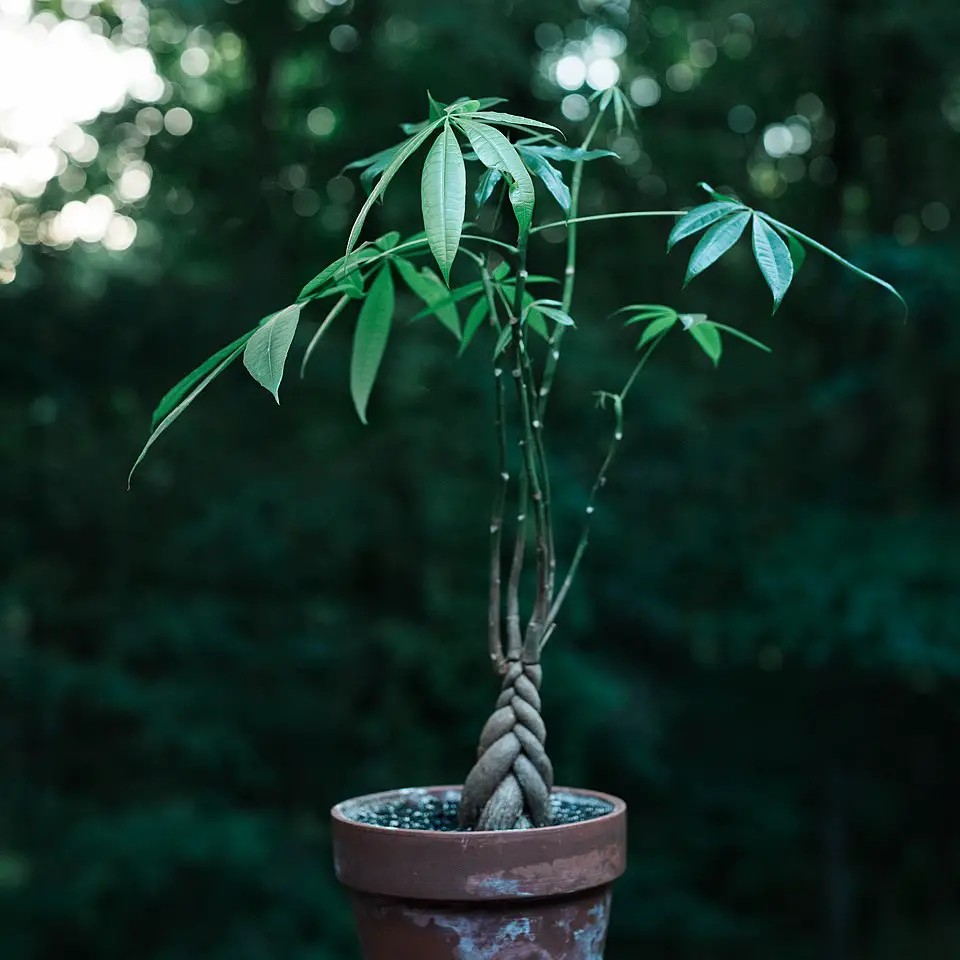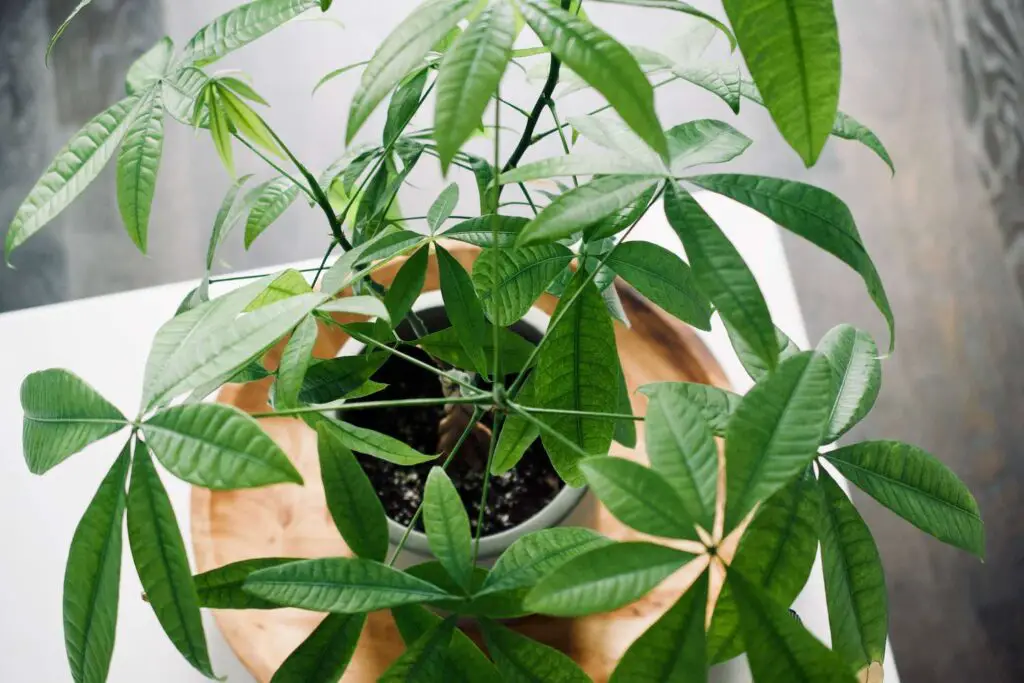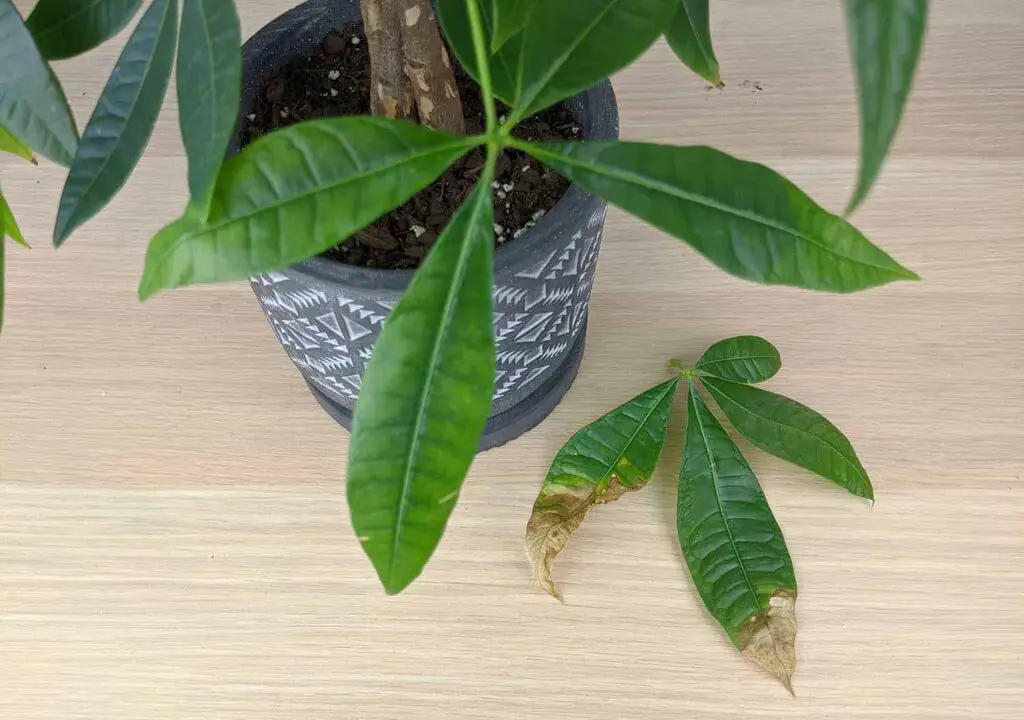The ideal soil mix for a Money Tree (Pachira aquatica) combines well-draining ingredients to ensure healthy growth. A recommended DIY recipe includes equal parts potting soil, perlite, and orchid bark. This mix provides essential nutrients while allowing excess water to drain away, preventing root rot.
Understanding Money Trees
Money Trees are popular houseplants known for their unique braided trunks and lush green leaves. They originate from Central and South America, particularly from the wetlands of the Amazon basin. The plant is often associated with prosperity and good fortune in various cultures. Money Trees are relatively low-maintenance, making them an excellent choice for both novice and experienced plant enthusiasts.

One of the critical factors in ensuring the health of a Money Tree is the type of soil used. A proper soil mix not only supports growth but also helps in maintaining the right moisture levels. Money Trees prefer a well-draining medium that prevents water retention, which can lead to root rot and other issues. Understanding the components of an effective soil mix is vital for nurturing your Money Tree.
Key Components of a Money Tree Soil Mix
The ideal soil mix for a Money Tree consists of multiple components that work together to create an environment conducive to healthy growth. Below are the main ingredients you should consider when creating your DIY soil mix:
- Potting Soil: This provides the necessary nutrients for growth and acts as the base of your soil mix.
- Perlite: A lightweight volcanic glass that improves aeration and drainage, preventing soil compaction.
- Orchid Bark: Adds texture and further enhances drainage while providing some organic matter.
- Coconut Coir: A sustainable alternative to peat moss that retains moisture without becoming soggy.
Each of these components plays a specific role in fostering the health of your Money Tree. When combined in the right proportions, they create a balanced environment that supports root development and overall plant vigor.

DIY Recipe for Money Tree Soil Mix
Creating your own soil mix for a Money Tree is simple and cost-effective. Here’s a straightforward recipe you can follow to prepare an optimal growing medium:
- Start with 1 part potting soil.
- Add 1 part perlite for improved drainage.
- Incorporate 1 part orchid bark to promote aeration.
- (Optional) Mix in ½ part coconut coir if you want additional moisture retention.
Mix these ingredients thoroughly in a large container until you achieve a uniform consistency. This combination will provide your Money Tree with the necessary nutrients while ensuring proper drainage. It is essential to avoid using heavy soils or those that retain too much moisture, as this can lead to problems like root rot.
Benefits of a Custom Soil Mix
Using a custom soil mix offers several advantages for growing a healthy Money Tree:

- Improved Drainage: Ensures that excess water does not accumulate around the roots.
- Nutrient-Rich: Provides essential nutrients tailored to the needs of a Money Tree.
- Customizable: Allows you to adjust the mix based on your plant’s specific requirements and local conditions.
- Cost-Effective: Reduces the need for expensive pre-mixed potting soils while allowing you to create exactly what you need.
By understanding the importance of each component in your Money Tree soil mix, you can create an ideal environment that promotes growth and vitality. This knowledge will empower you to take better care of your plant, ensuring it thrives in your home.
The right soil mix is critical for keeping your Money Tree healthy and vibrant. By following this DIY recipe, you can provide your plant with an excellent foundation for growth, paving the way for lush foliage and longevity.
Essential Care Tips for Money Trees
Once you’ve prepared the right soil mix for your Money Tree, proper care is essential to ensure its health and growth. This section focuses on various factors that contribute to the overall well-being of your plant, including watering, light requirements, and fertilization.
Watering Your Money Tree
Watering is one of the most critical aspects of caring for a Money Tree. Overwatering can lead to root rot, while underwatering may cause the leaves to wilt and drop. Here are some tips for effective watering:

- Check Soil Moisture: Always check the top inch of the soil before watering. If it feels dry, it’s time to water.
- Water Thoroughly: When watering, ensure that water seeps out of the drainage holes at the bottom of the pot. This ensures that the entire root system receives moisture.
- Avoid Standing Water: Never allow your Money Tree to sit in water. This can lead to root rot and other problems.
- Adjust Seasonally: Watering needs may vary with the seasons. During the growing season (spring and summer), you may need to water more frequently compared to fall and winter.
Light Requirements
Money Trees thrive in bright, indirect light. They can tolerate some direct sunlight, but too much can scorch their leaves. Here are some guidelines for providing adequate light:
- Location: Place your Money Tree near a window where it will receive filtered sunlight. East or west-facing windows are ideal.
- Avoid Harsh Sunlight: If you notice leaf burn or browning tips, it may be receiving too much direct sunlight. Consider moving it to a location with less intense light.
- Rotate the Plant: To ensure even growth, rotate your Money Tree every few weeks so all sides receive equal light exposure.
Fertilization Guidelines
Fertilizing your Money Tree is essential for providing it with the nutrients it needs to thrive. However, over-fertilization can harm your plant. Here are some best practices:
- Choose the Right Fertilizer: Use a balanced liquid fertilizer or a slow-release fertilizer specifically formulated for houseplants.
- Frequency: Feed your Money Tree every four to six weeks during the growing season (spring and summer). Reduce or stop fertilizing in the fall and winter when growth slows down.
- Dilution: Always dilute fertilizers to half strength, as Money Trees are sensitive to high concentrations of nutrients.
Pest and Disease Management
Like any houseplant, Money Trees can be susceptible to pests and diseases. Early detection and treatment are key to keeping your plant healthy. Here are some common issues and how to address them:
Common Pests
Money Trees may encounter various pests, including:
- Aphids: Small insects that suck sap from leaves. They can be addressed with insecticidal soap or neem oil.
- Spider Mites: Tiny pests that create webbing on leaves. Increase humidity around the plant and use miticides if necessary.
- Mealybugs: White, cotton-like pests that can harm your plant. Remove them manually with a cotton swab dipped in alcohol.
Disease Prevention
Preventing disease is crucial for keeping your Money Tree healthy. Here are some tips:
- Avoid Overwatering: As mentioned earlier, overwatering can lead to root rot. Ensure proper drainage and soil moisture levels.
- Good Air Circulation: Ensure that your plant is not crowded by other plants, which can hinder air circulation.
- Clean Leaves: Dust can accumulate on leaves, blocking sunlight. Wipe leaves regularly with a damp cloth to keep them clean.
Repotting Your Money Tree
As your Money Tree grows, it may need repotting to ensure it has enough space for its roots. Here’s how to do it effectively:
- Timing: Repot your Money Tree every two years or when you notice roots growing out of the drainage holes.
- Select a New Pot: Choose a pot that is 1-2 inches larger in diameter than the current pot.
- Add Fresh Soil: Use your DIY soil mix to fill the new pot before placing your Money Tree inside.
- Water After Repotting: Water thoroughly after repotting to help settle the soil around the roots.
By following these care tips, you can create an ideal environment for your Money Tree, helping it flourish and remain vibrant throughout its life.
Bank Notes, Dollar, Us Dollars, Usd, Money, Funds, Bills, Paper Money, Finance, Currency, Money, Money, Money, Money, Money
>Common Issues and Troubleshooting for Money Trees
Even with the best care, Money Trees can face challenges that may affect their growth and vitality. Understanding common issues and how to troubleshoot them can help you maintain a healthy plant. This section will cover symptoms to watch for and effective solutions.
Leaf Drop
One of the most common concerns for Money Tree owners is leaf drop. This can happen for several reasons:
- Environmental Stress: Sudden changes in temperature or humidity can shock the plant, causing leaves to drop.
- Overwatering: Excess water can lead to root rot, which makes leaves wilt and fall off.
- Underwatering: On the other hand, not providing enough water can cause the plant to conserve resources, leading to leaf drop.
If you notice leaf drop, assess the watering schedule and environmental conditions. Make necessary adjustments to help your Money Tree recover.
Yellowing Leaves
Yellowing leaves can be a sign of various issues. Here are some potential causes:
- Nutrient Deficiency: A lack of essential nutrients, particularly nitrogen, can result in yellowing leaves. Consider fertilizing your plant if it hasn’t been fed in a while.
- Water Issues: Both overwatering and underwatering can lead to yellow leaves. Check the soil moisture before making any changes.
- Pest Infestation: Certain pests can damage leaves, causing them to turn yellow. Inspect your plant for signs of pests.
Addressing yellowing leaves promptly can help prevent further damage and restore your Money Tree’s health.
Leggy Growth
If your Money Tree is growing tall and spindly rather than bushy and full, it may be experiencing leggy growth. Common causes include:
- Insufficient Light: Money Trees require bright, indirect light. If they are not receiving enough light, they may stretch towards the light source.
- Lack of Pruning: Regular pruning encourages bushier growth. If you haven’t pruned your plant, consider doing so to promote fuller foliage.
To fix leggy growth, move your Money Tree to a brighter location and trim back elongated stems to encourage new growth.
Propagation Techniques for Money Trees
If you want to expand your collection or share your Money Tree with friends, propagation is an excellent option. There are a few methods you can use:
Stem Cuttings
One of the easiest ways to propagate a Money Tree is through stem cuttings. Follow these steps for success:
- Select a Healthy Stem: Choose a healthy stem that has at least two nodes (the points where leaves attach).
- Make the Cut: Using clean, sharp scissors, cut a stem about 6 inches long just below a node.
- Prepare for Rooting: Remove the lower leaves from the cutting, leaving a few leaves at the top.
- Root in Water or Soil: Place the cutting in a glass of water or directly into moist soil. If using water, change it every few days.
- Wait for Roots to Develop: Once roots are about 2 inches long (this may take a few weeks), transplant into soil if started in water.
Air Layering
This method allows you to propagate while still attached to the parent plant. Here’s how to do it:
- Select a Branch: Choose a healthy branch and make a small cut about one-third through the stem, just below a node.
- Wrap with Moist Sphagnum Moss: Surround the cut area with moist sphagnum moss and wrap it with plastic wrap to hold it in place.
- Wait for Roots: After a few weeks, roots should begin to grow into the moss. You can check by carefully unwrapping the plastic.
- Cut and Plant: Once sufficient roots develop, cut below the roots and transplant into soil.
Both methods are effective for propagating Money Trees. Experiment with them to see which works best for you and enjoy expanding your indoor garden.
Caring for Your New Plants
Af
ter successfully propagating your Money Tree, providing proper care will ensure healthy growth. Here are some tips for nurturing your new plants:
- Light Conditions: Place new plants in bright, indirect light until they acclimate.
- Watering Schedule: Establish a watering routine similar to that of mature plants but be cautious not to overwater.
- Avoid Fertilizing Immediately: Wait at least a month before fertilizing newly propagated plants to allow them to adjust.
Nurturing your new Money Trees will not only enhance your space but also provide you with the satisfaction of growing plants from cuttings or layers.
Seasonal Care for Money Trees
Se
asonal changes can significantly affect how you care for your Money Tree. Understanding the different needs during each season will help you keep your plant thriving throughout the year.
Spring Care
Spring is a time of growth for Money Trees. As the days get longer and temperatures rise, your plant will become more active. Here are some tips for caring for your Money Tree in spring:
- Increase Watering: As the plant starts to grow, it will require more water. Monitor the soil closely and water when the top inch feels dry.
- Fertilize Regularly: Start fertilizing every four to six weeks with a balanced fertilizer to support new growth.
- Repot if Necessary: If your Money Tree has outgrown its pot, spring is an ideal time to repot into a larger container.
Summer Care
During the summer months, your Money Tree will be in full growth mode. Here are some care tips:
- Maintain Humidity: If you live in a dry area, consider using a humidifier or placing a pebble tray with water underneath the pot to maintain humidity.
- Monitor for Pests: Keep an eye out for pests, as they can thrive in the warm weather. Regular inspections can help catch infestations early.
- Adequate Light: Ensure your plant receives enough bright, indirect light, especially during long summer days.
Fall Care
As temperatures start to drop in the fall, your Money Tree will begin to slow down. Adjust your care accordingly:
- Reduce Watering: Cut back on watering as the plant’s growth slows down. Water only when the soil is dry to the touch.
- Stop Fertilizing: Cease fertilization until spring, as the plant enters a dormant period.
- Prepare for Indoor Conditions: If you move your Money Tree indoors, acclimate it gradually to avoid shock from sudden changes in light and temperature.
Winter Care
Winter can be challenging for indoor plants. Here are some key points for caring for your Money Tree during this season:
- Minimize Watering: With lower light levels and cooler temperatures, your Money Tree will require even less water than in fall.
- Avoid Drafts: Keep your plant away from cold drafts or heating vents that can cause temperature fluctuations.
- Maintain Light Exposure: Position your Money Tree near a bright window to ensure it receives adequate light during shorter days.
Final Thoughts
Caring for a Money Tree involves understanding its specific needs throughout the year. By providing the right soil mix, adequate light, proper watering, and timely fertilization, you can cultivate a healthy and vibrant plant. Recognizing and addressing common issues will help ensure that your Money Tree thrives both indoors and outdoors.
The DIY soil mix discussed earlier not only supports healthy growth but also empowers you to take control of your plant’s environment. Whether you’re propagating new plants or nurturing existing ones, consistent care will yield rewarding results. As you observe your Money Tree flourish, you will find joy in its beauty and significance, making it a cherished part of your home.
Incorporating these practices into your routine will not only enhance the life of your Money Tree but also deepen your appreciation for this remarkable plant. With patience and dedication, you can enjoy lush foliage and potentially reap the symbolic benefits of good fortune that this plant represents.
